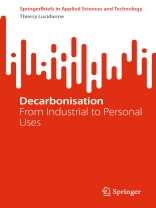This book is an insightful introduction to the pressing issues surrounding the climate emergency. The book proposes a set of principles of action, which prioritize technological solutions classified in descending order of carbon density.
The book highlights the urgent need to decarbonize industrial sites, as they are the primary sources of carbon emissions. It presents a rational approach to limiting emissions by improving the operational efficiency of industrial processes, electrification, and substitution of fossil fuels with carbon-free energy vectors such as hydrogen or ammonia. The book also describes processes for carbon capture, sequestration in the subsoil, and recovery through industrial products.
To demonstrate the application of these principles in difficult-to-decarbonize industrial segments, the book uses the industrial transport industry as an example. It also addresses the decarbonization of individual uses, such as electric cars for individual transport and heat pumps for individual heating.
The book concludes by discussing the capture of carbon directly from the atmosphere. It presents a comprehensive view of decarbonization technology, providing readers with a clear understanding of the technological basis required to develop any decarbonization roadmap. The book takes a scientific and engineering approach, trying to avoid any ideological or apocalyptic stance sometimes associated with the topic. The reader is left with a logical and realistic perspective of decarbonization, taking into account scientific and economic logic and orders of magnitude.
İçerik tablosu
Introduction.- The decarbonization of the industry.- The decarbonization of difficult or diffuse use cases.- Financing the energy transition.- Conclusion.
Yazar hakkında
Thierry Lucidarme is an engineer and has worked for many years in the field of energy. At EDF (Electricité de France), he is aiming to detect and promote R&D and innovation projects that could enhance the group’s value as well as its ability to decarbonise other industries or collective and individual uses.
Recently, he was leading the ADNOC company (UAE) decarbonation projects portfolio to meet the objectives of the carbon neutrality target of the United Arab Emirates by 2050. He is now with bcom, a Technology Research Institute aiming to develop more ‘IT for green’ innovative projects.












